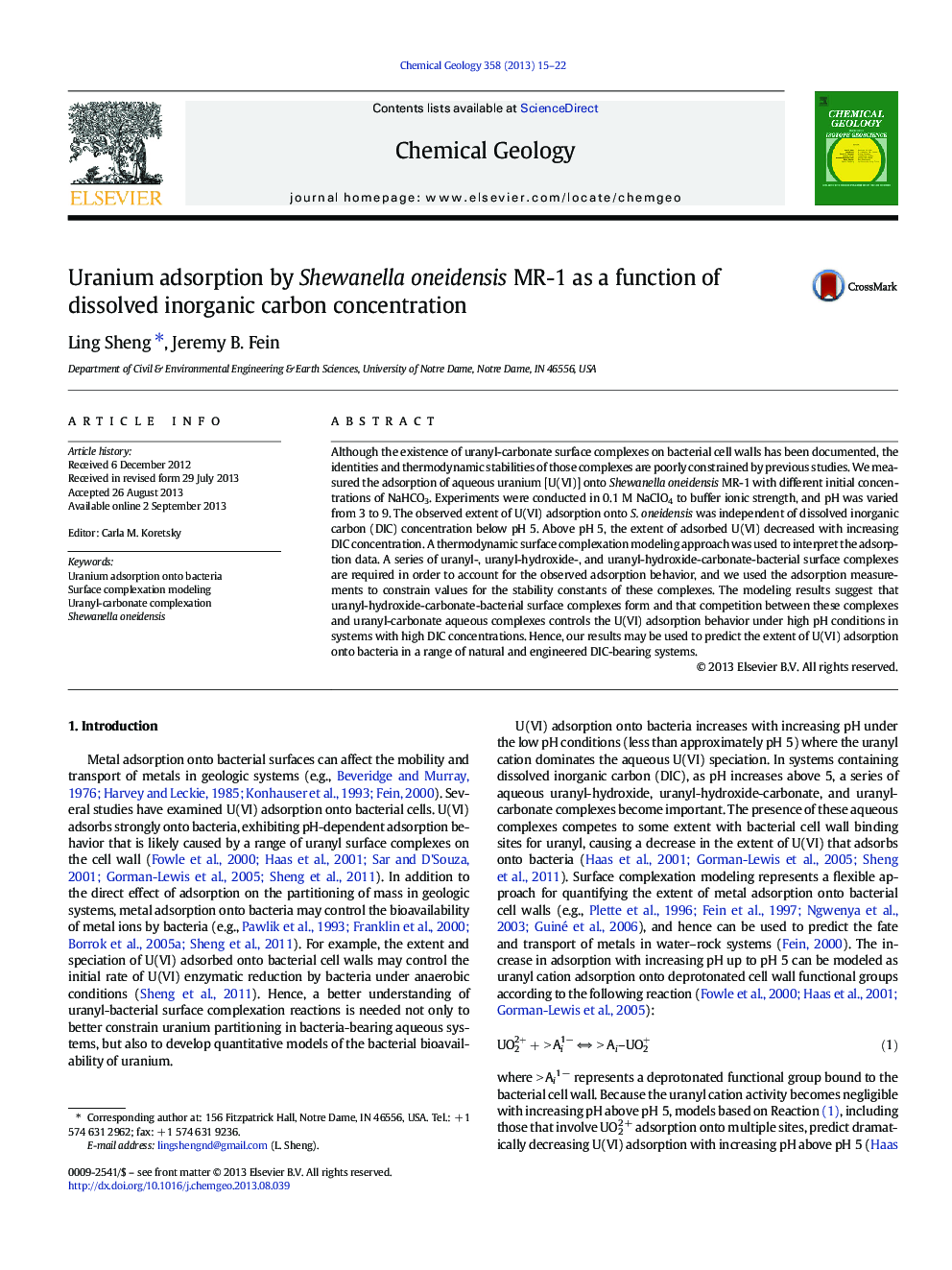| کد مقاله | کد نشریه | سال انتشار | مقاله انگلیسی | نسخه تمام متن |
|---|---|---|---|---|
| 6436803 | 1637611 | 2013 | 8 صفحه PDF | دانلود رایگان |

- Bacterial adsorption of U(VI) is independent of DIC concentration below pHÂ 5.
- Above pHÂ 5, U(VI) adsorption decreases with increasing DIC concentration.
- A series of uranyl-hydroxide and -carbonate complexes bind to bacteria above pHÂ 5.
- Bacteria can compete with DIC to control U(VI) distribution in aqueous systems.
Although the existence of uranyl-carbonate surface complexes on bacterial cell walls has been documented, the identities and thermodynamic stabilities of those complexes are poorly constrained by previous studies. We measured the adsorption of aqueous uranium [U(VI)] onto Shewanella oneidensis MR-1 with different initial concentrations of NaHCO3. Experiments were conducted in 0.1Â M NaClO4 to buffer ionic strength, and pH was varied from 3 to 9. The observed extent of U(VI) adsorption onto S. oneidensis was independent of dissolved inorganic carbon (DIC) concentration below pHÂ 5. Above pHÂ 5, the extent of adsorbed U(VI) decreased with increasing DIC concentration. A thermodynamic surface complexation modeling approach was used to interpret the adsorption data. A series of uranyl-, uranyl-hydroxide-, and uranyl-hydroxide-carbonate-bacterial surface complexes are required in order to account for the observed adsorption behavior, and we used the adsorption measurements to constrain values for the stability constants of these complexes. The modeling results suggest that uranyl-hydroxide-carbonate-bacterial surface complexes form and that competition between these complexes and uranyl-carbonate aqueous complexes controls the U(VI) adsorption behavior under high pH conditions in systems with high DIC concentrations. Hence, our results may be used to predict the extent of U(VI) adsorption onto bacteria in a range of natural and engineered DIC-bearing systems.
Journal: Chemical Geology - Volume 358, 4 November 2013, Pages 15-22